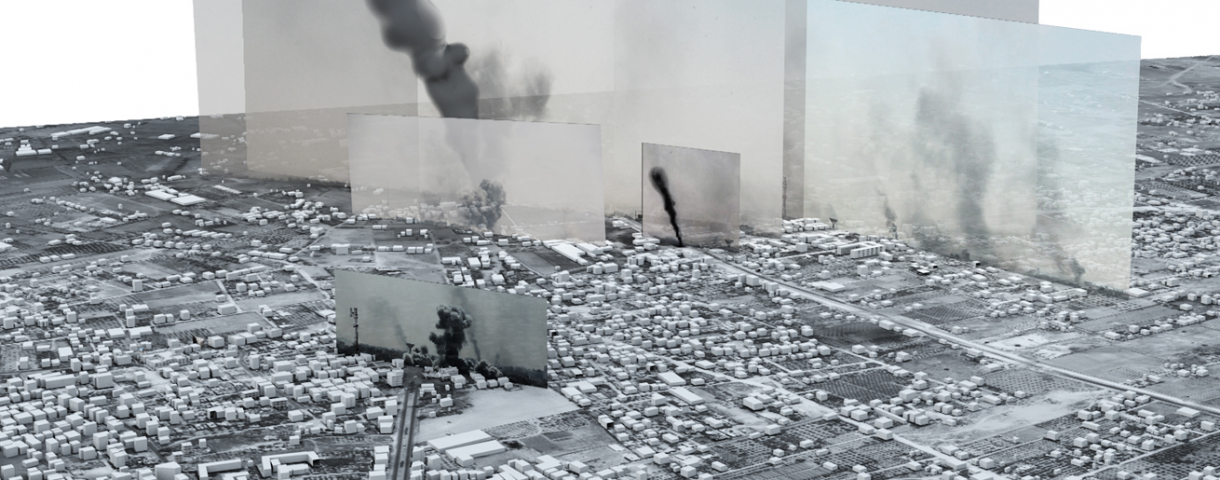Contemporary conflicts often take place in urban areas, where homes and hospitals become targets, and civilian casualties occur far too regularly. And one of the most under-researched aspects of deadly military airstrikes has been the territorial, urban, and architectural dimensions of the strikes.
Forensic Architecture repurposes existing design tools and architectural software to become a highly potent and uniquely analytical presentation tool. Existing design methods and architectural software is used to synthesize a wide arrange of source material, always beginning with direct contact with civilian partners who deliver their testimony through interviews, images, videos, and documents shared over widely-used communications and social media platforms. Using a combination of these testimonies and other visual materials gathered from police footage, social media, CCTV, and mainstream media reports, Forensic Architecture is able to accurately locate and model airstrikes, ultimately proving that human rights violations have taken place.
Forensic Architecture’s methodology ultimately works to empower victims of human rights abuses and those at risk of violence and destruction resulting from airstrikes in conflict zones, as well as to reverse the forensic gaze back onto the very state agencies - police, military, and secret services - that use forensic techniques (surveillance, tracking, and pattern analysis) to govern or control civilians in the first place.






